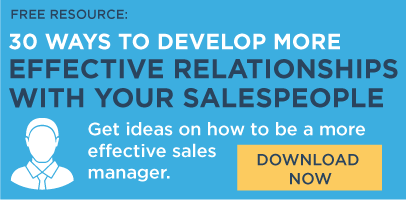
There are myriad ideas and theories out there about what makes a great leader, and many are useful. They give some insight into those characteristics that define effective leaders—strategic thinking, strong focus, a sense of mission, passion for customers, innovation, hard work—the list goes on.
But there is one trait strong leaders often exhibit that is not often discussed. It is the innate ability to build powerful relationships with the people who work for them. It’s critical, and it correlates to long-term success for the leader for several reasons:
1. Leaders can be bold and intelligent, but if no one is willing to follow them, then they are, by definition, not leaders.
You’re not leading if no one is following.
Think about your experiences. There are some bosses you’ve worked for that you would walk through walls (or burned your ships) for, right?
And I’m sure there are others you wouldn’t walk across the hall for. Exit interviews show that the number-one reason a person leaves a job is not for more money or even career advancement. It’s because they feel like their boss does not care about them or even know what they do all day. Failing to invest in powerful relationships is a leadership sin.
2. Leaders become great leaders because they are good at finding talented people and retaining them in the organization.
That is how they build companies and develop others who become leaders in an effort to accomplish corporate goals. So what is this powerful relationship ability that great leaders exhibit? If my boss has a powerful relationship with me, it has these hallmarks:
- He knows his people as individuals, not merely as employees who have particular responsibilities in the organization.
- It’s obvious in everything she does that she cares about her people.
- His good intent is clear. When he does something for someone, it is for their own good, to help them grow and develop. If he were doing it just for his own good, he would be using that person.
- She invests in her people and very often realizes a return on that investment.
- He has to have tough conversations with people from time to time, but at the end of the day, no one questions that he has their best interests at heart. (If things aren’t going well, wouldn’t you rather hear that from someone who cares about you rather than someone who doesn’t?)
So, how can you make sure you are developing powerful relationships with your people?
There are many ways:
- Take responsibility for creating the relationship, don’t wait for your people to initiate it.
- Learn about their core values—work, community, family, faith, whatever—and support them.
- Focus your energies on their strengths, not their weaknesses. Strengths can grow and grow, but weaknesses rarely budge.
- Learn about their innate talents and what drives them. This allows you to push the right motivation buttons.
- Go on their turf more often than they come to yours.
- Be a consistent and predictable source of leadership, guidance, and support.
- Provide continuous feedback and notice what they are doing to help your organization.
There are more important things you can do to build powerful relationships.
Conclusion
So, surprise, the best leaders are strong in developing relationships with their people.
I ran a program for managers about ten years ago where I was fortunate enough to get Tony Dungy to speak. He was well on his way to turning the Tampa Bay Buccaneers franchise around by that point and only a few years from winning a Super Bowl as the head coach of the Indianapolis Colts. Tony is a candidate for the Pro Football Hall of Fame and will likely be there in the not-too-distant future. One of our participants asked him what kind of relationship he develops with his players. Tony said, “I know you are not supposed to, but I tend to develop pretty close relationships with my guys.”
Most leaders say the same thing. After apologizing for it, they admit they develop close and powerful relationships with their people. Leadership has many facets. Ignoring this one keeps a lot of great potential leaders off the list.
 *Editor's Note: This blog was originally written in 2017 and has since been updated.
*Editor's Note: This blog was originally written in 2017 and has since been updated.




